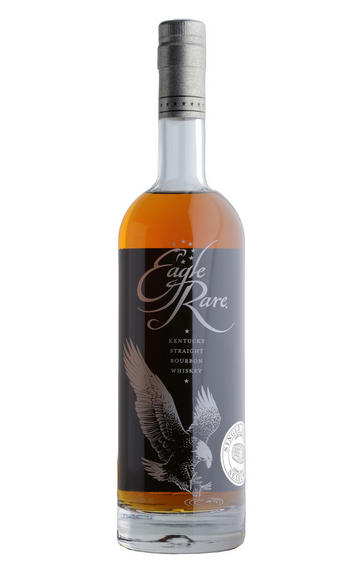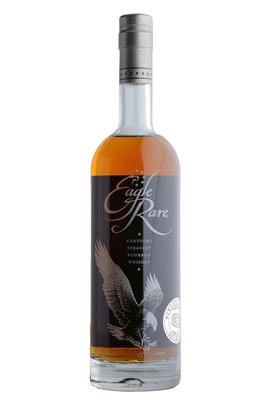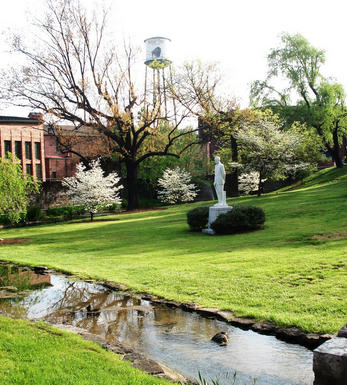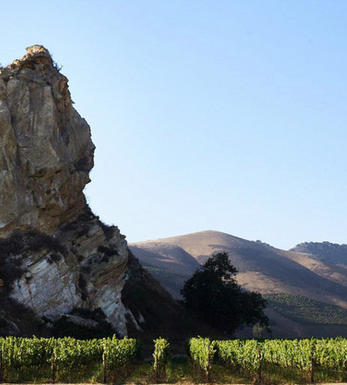
Eagle Rare, Single Barrel Select, Berry Bros. & Rudd Exclusive, 10-Year- Old, Kentucky Straight Bourbon Whiskey, USA (45%)

About this SPIRIT

Buffalo Trace Distillery
Buffalo Trace Distillery, located in Frankfort, Kentucky, is among the leading brands of fine bourbon whiskey. It has historically been known by several names, including most notably, the George T. Stagg Distillery and the O.F.C. Distillery. Its namesake bourbon brand, Buffalo Trace Kentucky Straight Bourbon whiskey, was introduced in August 1999.
The company claims the distillery to be the oldest continuously operating distillery in the United States. During Prohibition, the distillery was allowed to remain operational, in order to make whiskey for "medicinal purposes". Buffalo Trace is made from corn, rye, and barley malt, and aged in charred oak barrels. Approximately 25–30 barrels are selected and mixed before bottling. It has won several awards since its introduction. While Buffalo Trace Distillery is mainly known for its bourbon, it also produces other spirits such as rye whiskey

USA
The United States is the world's fourth largest wine-producing nation after France, Italy and Spain, with double the quantity of fifth-placed Argentina. California is far and away the country's most important winemaking region, accounting for 90 percent of production. Wine is actually produced in every one of America's 50 states, even if Utah, Wyoming and North Dakota have only 12 wineries and just over 35ha of vines between them.
The history of the US wine industry is a thorny one; try as they might, the early East Coast settlers had little success making wine and had to wait until the mid-19th century for their first commercially-successful example: Nicholas Longworth's famous sparkling Catawba from Cincinnati, Ohio. The West Coast had a climate far more conducive to vine-growing and from its first vineyard (most likely Mission) planted in 1769 at San Diego, the wine industry swiftly flourished, boosted by the influx hastened by the Gold Rush.
However, the twin blights of mildew and phylloxera at end of the 19th century, followed by Prohibition from 1920 to 1933, set the wine industry back 100 years. Ever since, wine has endured a somewhat uneasy existence, flourishing despite an obstructive distribution system and often tacit government disapproval.The US boasts every type of producer, from the tiny garagiste nurturing a couple of barrels of incredibly rare and expensive wine, to the monumental producers of cheap brands like Ernst & Julio Gallo who sell 75m cases of wine a year – 25 percent of the total production of the US. Such progress has largely taken place in the last 40 years through an unquenchable desire for quality, the insistence on the finest expertise and technology, enormous investment and astute marketing.
California produces some of the world's greatest Cabernet Sauvignon, Merlot, Zinfandel, Pinot Noir and Chardonnay from famous regions like Napa and Sonoma. Recognition of this success dates back to the 1976 Judgment of Paris where The Golden State’s finest trounced the cream of French wine in a blind tasting.
After California, New York is in fact the second biggest wine-producing state; most wines are made from Concord, a grape often described as `foxy' – and not in a good way – although increasingly also from Chardonnay. From a qualitative point of view, however, California's closest rivals are Washington, which specialises in Bordeaux blends, and Oregon - which yields some very fine Pinot Noir. Of the rest, Virginia's reds from Cabernet and Merlot are showing potential, while Georgia, Missouri, Texas, Idaho, South Carolina, Pennsylvania and Michigan all have significant plantings, mostly of hybrid American varieties.
Although it doesn't yet have an AOC system per se, the concept of American Viticultural Areas (AVAs) was introduced here in 1980. From the very first in Augusta, Missouri, they have now grown to number 188. AVAs have none of the restrictive rules of the AOC system and are all the better for it: 85 percent of any wine labelled with a given AVA must come from that region. In addition, every state and county is classified as its own appellation.


Buying options
Add to wishlist
Description
The nose is tantalising, with aromas of baked apples, pear tarte tatin, sweet baking spices (nutmeg and cinnamon), freshly popped corn, vanilla cheesecake and a hint of toasted coconut flakes. The palate offers delicious richness and definition. Notes of pine forest, coco powder, dried prunes and browned butter hug the palate with a suitable oiliness and a balanced warmth. The list of characteristics could continue; this is truly complex. It is a very fine example indeed from this category.
Amy Johnson, Account Manager, Berry Bros. & Rudd (June 2023)
spirit at a glance
Delivery and quality guarantee